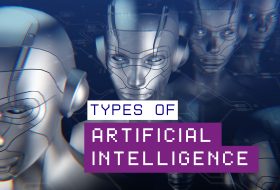Union Budget for the year 2025-26 has set a transformative agenda for skill development in the country.
The budget places specific emphasis on technology, particularly Artificial Intelligence (AI), vocational education and inclusive education. Finance Minister Nirmala Sitharaman’s budget speech highlighted various initiatives focused on skilling the workforce of tomorrow, enabling students with industry-relevant skills and creating a pathway from education to employment.
In her budget speech, Finance Minister Nirmala Sitharaman highlighted the importance of skill development and education in achieving India’s vision of becoming a “Viksit Bharat” (developed India). She stated:
“The Union Budget 2025-26 is a step towards a ‘Viksit Bharat’ by focusing on skill development, education and employment. With a dedicated focus on Artificial Intelligence, we are preparing the future workforce to flourish in a technology-driven economy.”
She further emphasized the importance of building infrastructure to support the growing needs of the education and skill development sectors, stating:
“Through the establishment of Centres of Excellence for Skilling, AI-powered education platforms and the expansion of vocational training, we are equipping our youth with the necessary tools to succeed in an increasingly competitive global economy.”
Budget Allocation for Skill Development and Vocational Education
The government of India, in its Union Budget, has earmarked a significant portion of resources for education this year. A total of ₹1.28 lakh crore has been allocated in this regard, which is an increase over the previous year’s estimates. Within this allocated amount, ₹50,067 crore is dedicated to higher education, whereas ₹78,572 crore is set aside for school education.
This is a significant amount that is pivotal to strengthening India’s educational infrastructure, thus ensuring that it is well-prepared for the emerging demands of an increasingly digital economy.
Commitment to AI and Vocational Skill Improvement
One of the exemplary features of this year’s Union Budget is the emphasis on initiatives encompassing the integration of AI into skill development programs. Finance Minister Nirmala Sitharaman has also announced a ₹500 crore allocation to establish a Centre of Excellence in AI for Education. This is done with a motive to build AI capabilities in educational institutions. This endeavor aligns with India’s larger vision of ‘Industry 4.0’ and ‘Make in India, Make for the World.’ The effort seeks to position AI as a cornerstone of the future workforce. It is done to make sure that students and professionals develop the appropriate skills required in a technology-centric economy.
Union Budget 2025-26: Strengthening Education, Skill Development and Entrepreneurial Growth
The government has proposed a slew of measures to enhance education and skill development across sectors:
1. National Centres of Excellence for Skilling
Union Budget outlines plans to establish 5 National Centres of Excellence (NCEs) dedicated to competence building. These institutes will associate with global partners to offer industry-relevant training and provide students with expertise aligned to international standards. The primary aim of establishing these NCEs is to focus on both technical and soft skills. It will further help in reducing the disparity between classroom learning and industry demands. Through a combination of practical education, internships and worldwide collaborations, these centers will provide the youth of India with the tools to succeed in the global job market, enhancing both their employability and innovation.
2. Atal Tinkering Labs Expansion
In the Union Budget, the Government of India has proposed an expansion of Atal Tinkering Labs (ATLs) over the next five years, with a target of reaching 50,000 government schools. This initiative marks a transformative step for education in India. These labs have been established to encourage students in fields like robotics, AI, and coding through hands-on learning. Expansion will make innovation accessible to students from diverse backgrounds, promoting innovative thinking and creativity. According to the Finance Minister, ATLs will empower students by promoting proficiency in emerging technologies. This will help them develop a practical understanding of STEM subjects and problem-solving abilities.
3. Broadband Connectivity in Secondary Schools
Union budget has also emphasized on improving broadband connectivity in secondary government schools. This is to make sure that students have access to digital learning resources. This proposal will provide personalized learning experiences and improve educational quality, especially in rural areas. With the help of high-speed internet, students will engage with interactive learning platforms, digital textbooks and AI-powered educational tools. This will also assist in enabling teachers with digital teaching aids, thus adapting the traditional classroom approach into a more dynamic, inclusive and universally accessible educational environment for students.
4. Infrastructure Expansion in IITs and Medical Education
It’s an exciting time for the education sector! The government of India, through its Union Budget 2025-26, has placed a big emphasis on improving India’s educational infrastructure. The government is planning to set up 5 new IITs in cities like Jammu, Bhilai, Dharwad, Palakkad and Tirupati. These new institutes will add 6,500 more student seats over the next five years. It is a great step towards accommodating more students who want to pursue world-class technical education. And it is not just the new IITs; existing ones, like IIT Patna, are also getting upgrades – with better hostels, improved academic facilities and more. This expansion plan depicts the government’s strong commitment to providing top-tier education. This is also clear from the fact that student enrollment in IITs has doubled in the last decade.
Talking about the medical front, the union budget also focuses on addressing the shortage of healthcare professionals. The government has proposed adding 75,000 new medical seats over the next five years. Out of these, 10,000 extra seats are coming next year itself. This move is specifically targeted at reducing the number of students going abroad for medical education. In fact, the last decade has seen a 130% increase in medical seats, with over 1.1 lakh new undergraduate and postgraduate seats added. It’s a major step toward strengthening India’s healthcare sector.
5. Strengthening Public-Private R&D Partnerships
In this budget, the government has made a significant course correction by allocating Rs 20,000 crore to improve public-private partnerships in research and development (R&D). This move is centered around boosting domestic innovation, encouraging industry-led research and reducing India’s dependency on imported technology. The major goal behind this intended plan is to create a more self-reliant and technology-driven economy. It increases the bonding between the public and private sectors, setting the stage for homegrown advancements in various industries.
Sitharaman also stated, “Over the next five years, the PM Research Fellowship scheme will offer 10,000 fellowships for technological research at IITs and IISc, accompanied by increased financial support.” The belief driving this move is that fellowships and increased financial support will lead to greater technological breakthroughs.
6. Support for Startups and MSMEs
A new Rs 10,000 crore Fund of Funds will be started by the government that will support startups, driving innovation and business opportunities, particularly in manufacturing and technology. The budget also includes measures to support startups and MSMEs by improving access to credit and offering tax incentives. Simplifying regulatory processes will help startups flourish, providing young entrepreneurs with the resources needed to scale their businesses. These steps taken by the government will boost entrepreneurship, create employment, and promote innovation. Moreover, this approach will rejuvenate India’s economy, propelling growth, job creation and positioning the country as a more competitive player in the global marketplace.
Highlights of Budget for Skill Development and Employment
With a focus on India’s youth, the budget introduces strategies to provide them with the capabilities needed to excel in an increasingly digital world:
- Bharatiya Bhasha Pustak Scheme stands out as a progressive move by the government. This is aimed at providing digital access to textbooks in various Indian languages. The benefit of this scheme is to ensure students from diverse linguistic backgrounds have equal access to educational resources, promoting multilingual education and facilitating inclusivity.
- PM Research Fellowship is another critical step. The government is offering 10,000 fellowships to top students pursuing advanced degrees in science and technology. This move not only provides financial support but also encourages innovation. The goal is to build a robust research ecosystem in the country, positioning India as a global leader in technological advancements.
- A ₹250 billion Maritime Development Fund has been earmarked to boost the maritime sector. This fund will enhance India’s shipbuilding and repair capabilities. It will further help in the creation of thousands of job opportunities across related industries. It’s a strategic proposal that aligns with India’s vision of strengthening its infrastructure and trade routes.
- Finally, the government is emphasizing AI-driven workforce development. As AI and automation grow in importance, initiatives are being launched to train India’s youth in automation, data science and AI. These AI-driven platforms will help prepare them for the global job market, ensuring a workforce ready for the future.
Conclusion
The union budget presented by the Finance Minister of India focuses on improving skills in areas like AI, vocational education and digital literacy. These efforts will transform India’s education system and prepare the youth of this country for the employment market. The government wants to improve the potential of youth with skills that meet industry needs and help India become a global hub for talent and innovation.
AI-based learning platforms, more medical education seats, and the expansion of Atal Tinkering Labs will ensure that students from all backgrounds have the resources to succeed. As Finance Minister Sitharaman said, “Education, skilling, and employment are the building blocks of a Viksit Bharat.”
With a focus on technology, entrepreneurship, and job-relevant skills, India is on track to create a workforce that can compete globally. And this budget is a step toward making this vision a reality, ensuring that all Indians have access to good education and meaningful jobs.











